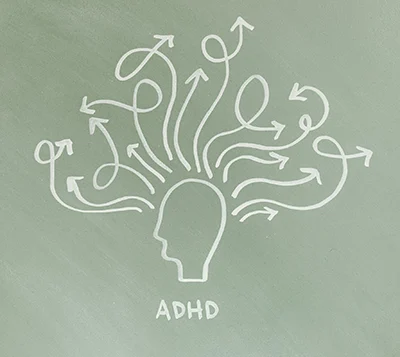Self-Harm Awareness Month is about Breaking the Silence and Stigma that surrounds Self-Harm
March is Self-Harm Awareness Month, a time dedicated to shedding light on an issue that affects many individuals, yet is often misunderstood. If you are someone who struggles with self-injury, please know that you are not alone. Your feelings and experiences are valid, and there is support available to help you through this difficult journey.
For those who do not engage in self-harm, this month presents a valuable opportunity to learn and understand more about this complex issue. It is a chance to support others and work together to break down the stigma that often surrounds such a sensitive topic. Together, we can foster compassion and understanding, creating an environment where everyone feels safe to share their struggles and seek help. Remember, it’s okay to reach out and ask for support, whether for yourself or for someone you care about. You matter!
What is Self-Harm?
Self-harm, also known as nonsuicidal self-injury (NSSI), is when someone deliberately injures themselves as a way to cope with emotional pain, distress, or overwhelming feelings. While it does not necessarily mean a person wants to end their life, it is a serious concern and should never be ignored. People who self-harm may cut, burn, scratch, or hit themselves, among other methods. This behavior is often a way to deal with emotions that feel unbearable or out of control.
Why Do People Self-Harm?
There is no single reason why people engage in self-harm. Everyone’s experience is unique, but some common reasons include:
Coping with emotional pain:
Some individuals find that physical pain helps them manage intense emotions like sadness, anxiety, anger, or frustration.
Feeling numb or disconnected:
Self-harm can provide a temporary sense of reality when someone feels emotionally detached or empty.
Self-punishment:
Those struggling with feelings of guilt or worthlessness may harm themselves as a way of expressing self-hatred.
Regaining control:
When life feels chaotic or overwhelming, self-harm may give a false sense of control over emotions or situations.
Communicating distress:
Some people who have difficulty expressing their emotions verbally may use self-harm as a way to show others that they are struggling.
The Myths and Realities of Self-Harm
Misinformation can make it harder for people who self-harm to reach out for help. Let’s address some common myths:
Myth: Self-harm is just attention-seeking.
Reality: Many people go to great lengths to hide their injuries. Self-harm is usually a private coping mechanism, not a way to seek attention.
Myth: Only teenagers self-harm.
Reality: While self-harm often begins in adolescence, it affects people of all ages, including adults.
Myth: If someone self-harms, they must be suicidal.
Reality: Although self-harm is a sign of emotional distress, not everyone who self-injures is suicidal. However, it does increase the risk of suicidal thoughts and should be taken seriously.
Myth: People can just stop self-harming if they really want to.
Reality: Self-harm can become a habit or even an addiction. Quitting is difficult without support and healthier coping strategies.
How to Support Someone Who Self-Harms
If you know someone who self-harms, it can be challenging to understand how to help. Here are some ways to offer support:
Be there without judgment: Let them know they are not alone and that you care about their well-being.
Encourage professional help:
Therapy, especially cognitive-behavioral therapy (CBT) and dialectical behavior therapy (DBT), can help individuals develop healthier coping mechanisms.
Help them find alternative coping strategies: Creative outlets like writing, drawing, listening to music, or engaging in physical activity can provide a safer way to deal with emotions.
Educate yourself: Learning about self-harm can help you better understand and support those who are struggling.
Be patient: Recovery is not immediate. Slip-ups may happen, but every step toward healing matters.
Resources for Help
If you or someone you know is struggling with self-harm, help is available. Here are some resources:
National Suicide Prevention Lifeline: 988 (U.S.)
Crisis Text Line: Text HOME to 741741 (U.S. and Canada)
National Alliance on Mental Illness (NAMI): 1-800-950-NAMI (6264)
Self-Injury Outreach & Support: www.sioutreach.org
To Write Love on Her Arms (TWLOHA): www.twloha.com
You Are Not Alone!
References
American Psychological Association. (2020). Understanding self-injury. APA.
Chapman, A. L., Gratz, K. L., & Brown, M. Z. (2006). Solving the puzzle of deliberate self-harm: The experiential avoidance model. Behaviour Research and Therapy, 44(3), 371-394.
Gratz, K. L. (2006). Risk factors for deliberate self-harm among female college students: The role and interaction of childhood maltreatment, emotional inexpressivity, and affect intensity/reactivity. American Journal of Orthopsychiatry, 76(2), 238-250.
Klonsky, E. D. (2007). The functions of deliberate self-injury: A review of the evidence. Clinical Psychology Review, 27(2), 226-239.
Klonsky, E. D., May, A. M., & Glenn, C. R. (2013). The relationship between nonsuicidal self-injury and attempted suicide: Converging evidence from four samples. Journal of Abnormal Psychology, 122(1), 231-237.
NAMI. (2022). Self-harm. National Alliance on Mental Illness.
Nock, M. K. (2009). Why do people hurt themselves? Current Directions in Psychological Science, 18(2), 78-83.
Rodham, K., Hawton, K., & Evans, E. (2004). Reasons for deliberate self-harm: Comparison of self-poisoners and self-cutters in a community sample of adolescents. Journal of the American Academy of Child & Adolescent Psychiatry, 43(1), 80-87.
Turner, B. J., Layden, B. K., & Butler, S. M. (2015). Critical issues in the assessment of nonsuicidal self-injury: Implications for intervention. Behavior Therapy, 46(5), 614-623.
Whitlock, J., Muehlenkamp, J., & Eckenrode, J. (2011). Variation in nonsuicidal self-injury: Identification and features of latent classes in a college population of emerging adults. Journal of Clinical Child & Adolescent Psychology,









0 Comments